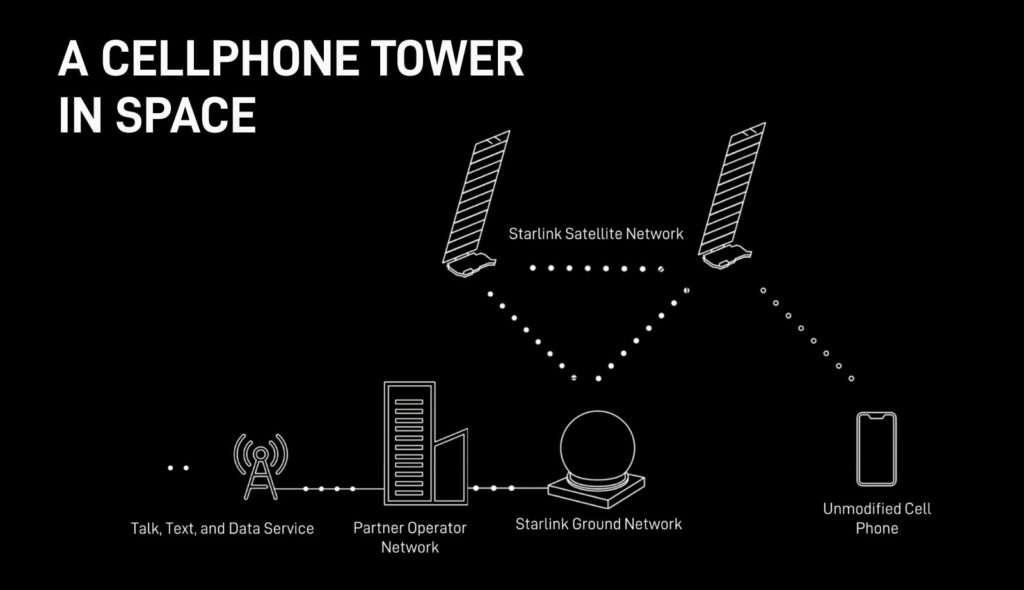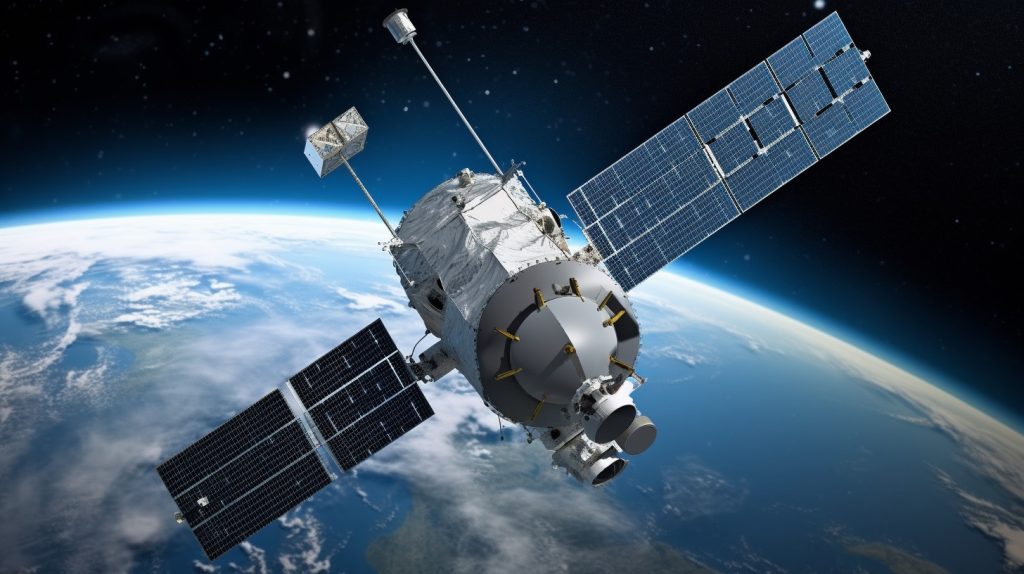SpaceX intends to allow direct-to-cell capabilities for its satellite internet provider, Starlink, beginning next year with texting capability. Voice and data, as well as IOT, will be available in 2025, according to the company’s website.
Starlink’s direct-to-cell technology will work with existing LTE phones “wherever you can see the sky” without the need for any additional hardware, software, or special apps.
“Starlink satellites with Direct to Cell capability have an advanced eNodeB modem onboard that acts like a cellphone tower in space, allowing network integration similar to a standard roaming partner,” according to the company’s website.
RELATED: SpaceX Uses Thousands Of Space Lasers To Increase Starlink Internet Speeds
The direct-to-cell satellites will be launched by SpaceX’s Falcon 9 rocket, followed by Starship.

The future developments will help Starlink achieve its objective of worldwide connectivity. The ability to connect a typical smartphone to a low-Earth orbit satellite would remove the concept of dead zones by offering dependable, high-quality connectivity in remote regions for the first time.
RELATED: 22 Starlink Satellites Were Successfully Launched By SpaceX
This isn’t the first time Starlink has attempted to connect normal cellphones to its satellites. SpaceX said earlier this month that it will test device-to-device (D2D) connectivity over T-Mobile’s 1910-1915 MHz and 1990-1995 MHz bands, also known as the PCS G Block of radio airwaves. The company also requested 60 days of “Special Temporary Authority” from the Federal Communications Commission to launch and test the capacity of the company’s Gen2 satellites to connect a standard mobile connection.

The revised schedule may potentially attract more potential Starlink subscribers, especially since the provider abolished its service queue last week. Previously, access to its service was limited while it gradually increased capacity. In the last nine months, the company added approximately one million users, bringing its overall customer base to more than two million. Starlink initially aimed for 20 million subscribers by 2022.
RELATED: SpaceX Successfully Launches 22 More Starlink Satellites Into Orbit
AT&T had already completed a satellite call using 5G. Last month, AST SpaceMobile called a Vodafone engineer in Madrid, Spain, using a Samsung Galaxy S22 smartphone in a wireless dead zone in Maui, Hawaii. The cell signal arrived at its destination via AT&T’s 5G airwaves, Nokia’s network core, and AST SpaceMobile’s low Earth orbit satellite, BlueWalker 3.

Competition for fast, dependable connectivity is high, and interest in satellite communication is expanding. In August, T-Mobile and Space X’s Starlink announced a 5G alliance. Starlink now has over 5,000 internet satellites in orbit, with more on the way. Amazon intends to launch a low-Earth orbit satellite constellation known as Project Kuiper, and Vodafone intends to use Project Kuiper’s high-bandwidth, low-latency network to improve connectivity services in Africa and Europe, where the company has a large customer base.
Download The Radiant App To Start Watching!
Web: Watch Now
LGTV™: Download
ROKU™: Download
XBox™: Download
Samsung TV™: Download
Amazon Fire TV™: Download
Android TV™: Download

